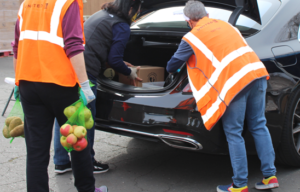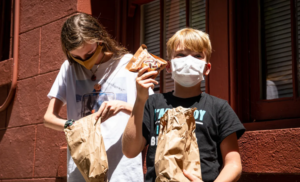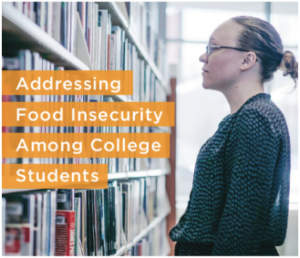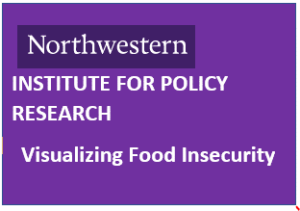



Below are great resources to get the latest facts and information on food insecurity.
Food insecurity is a real challenge in California, and it’s our job at CalFoods Logistics to make sure food banks all over this great State are stocked with a variety of nutritional items to help bridge the gap with supplemental nutrition for those in need. We are also fortunate to be able to support all satellite food banks with any infrastructure needs that may be needed.
During our first two months, CFL delivered directly to 23 satellite food banks in more rural areas of California, covering 30 counties and hundreds of miles. In addition, CFL monitors direct deliveries from the USDA to the remaining food banks serving the other 28 counties in our State. All in all, TEFAP providers are helping approximately 1.7 million people every month. For more information about TEFAP, here is a link with more details: The Emergency Food Assistance Program | USDA-FNS
Are You Hungry or Food Insecure?
Hunger is a craving, a physical sensation, discomfort, or urgent need for food that can be satisfied with a meal. Not all of us have experienced food insecurity.
Food insecurity is a lack of consistent access to enough food for every person in a household to live an active, healthy life. This can be a temporary situation for a household or can last a long time. Food insecurity is one way we can measure how many people cannot afford food.
According to the USDA, more than 38 million people, including 12 million children experience food insecurity in the United States. – Feeding America
California Association of Food Banks
 1 in 5 households in California face food insecurity on a daily basis – a staggering 8 million people. While down from the high watermark of the early COVID-19 pandemic when a full fourth of our state was experiencing food insecurity, hunger rates remain above the pre-pandemic rate of 1 in 8.
1 in 5 households in California face food insecurity on a daily basis – a staggering 8 million people. While down from the high watermark of the early COVID-19 pandemic when a full fourth of our state was experiencing food insecurity, hunger rates remain above the pre-pandemic rate of 1 in 8.
The face of hunger represents the diversity of California. It impacts children, students, and older adults, veterans, single parents, and those living with disabilities. It affects our unemployed, underemployed, and working families. Learn – Everyone to the table
CAFB The Impact, The Challenges, & The Collective Response
In 2020, the California Association of Food Banks’ 41-member food banks responded to an unprecedented demand for food by rapidly redesigning their program delivery models in order to safely increase food distribution and adjust to necessary safety measures. Still, food donations and staffing resources were vastly outpaced by increased demand.
Download the fact sheet here. https://www.cafoodbanks.org/blog/member-factsheet-2020/
Center for American Progress

Learn the structural inequities experienced by Black, Latinx, and Multiracial communities. Over the past 20 years, both Black and Hispanic households have consistently been at least twice as likely as white households to experience food insecurity.
Read the study here:
Feeding America – College Hunger

College students are quickly becoming another segment of those experiencing food insecurity. With high costs of courses, books, living on campus, and food programs, leaves a student with little or no extra funds.
Food banks have responded to need on college campuses with brick-and-mortar food pantries on college campuses, mobile pantries that distribute on or near campuses, SNAP (formerly known as food stamps) application assistance, and more.
Read what Feeding America has found.
Feeding America – Map the Meal Gap

Since 2011, Feeding America has conducted an annual Map the Meal Gap study to improve understanding of food insecurity and food costs at the local level. The most recent release reflects 2020 estimates of food insecurity for the overall population and children at multiple geographic levels, including counties, food bank service areas, congressional districts and states.
Use the interactive Map the Meal Gap on their website to find out about food insecurity in your area.
Overall (all ages) Hunger & Poverty in the United States | Map the Meal Gap (feedingamerica.org)
Northwestern University Latest Research
California Food Insecurity Rate: 20%

Check out this cool tool from the Institute for Policy Research researchers visualizing food insecurity data across the nation. Users can find data from April 23 onward from the U.S. Census Household Pulse Survey on weekly rates of food insecurity for respondents with and without children, which can also be sorted by race and ethnicity for selected states.
Visit their website for the data.
Visualizing Food Insecurity: Institute for Policy Research – Northwestern University

